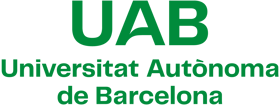Archives in the Age of Artificial Intelligence
Today’s cultural institutions—libraries, archives, museums, and beyond—as well as private companies and even individuals, are grappling with an overwhelming volume of visual materials accumulated over decades, much of which remains difficult to access or interpret at scale. Artificial intelligence is increasingly viewed as a tool for addressing this complexity, offering new ways to search, sort, and curate large image collections. Technologies such as image recognition, tagging, and content generation, used primarily for efficiency, are shaping how visual narratives are contextualized. This Learning Opportunity was created in response to that shift. It invites students to reflect on a key question: How can AI meaningfully support the work of image curation, and what limitations or challenges must be addressed for it to serve the public good?
The course prepares future professionals to engage with AI not only as a technical resource but also as a cultural and ethical concern. It offers a space to reflect on constructed memory, representation, and the often-invisible decisions that determine what is preserved—and what is left out.



